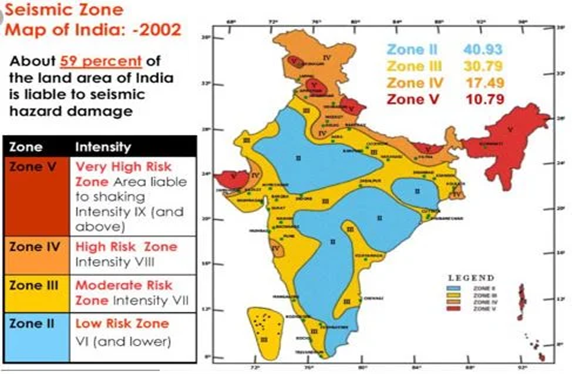

22nd June 2022 (6 Topics)
Context
The government recently inaugurated a seismological observatory in Udhampur, Jammu and Kashmir.
About
- The National Centre for Seismology (NCS) in the Ministry of Earth Sciences (MoES) has initiated several new measures to upgrade and strengthen the infrastructural facilities.
- They aim to provide better scientific inputs required for improving disaster mitigation and preparedness measures.
- It has installed 152 permanent observatories throughout the country with and plans to install 100 more in the next five years.
Need for Earthquake Observatories:
- The occurrence of an earthquake is a natural process, beyond human power. Hence, preventionis the only way.
- Further, the Indian subcontinent is considered as one of the world's most disaster-prone areasin terms of earthquakes, landslides, floods, cyclones, and tsunamis.
Objective of the project
- It is part of an effort titled Seismic Microzonation, which aims to generate vital geotechnical and seismological parameters for developing earthquake risk resilient building design codes for structures and infrastructures.
- It has initiated actions for the setting up of an earthquake early warning system (EEWS) on a pilot basis for a small area in the Himalayas.
- It has a precise mandate of collecting, collating and integrating various data sets to provide site-specific risk maps as per user needs.
|
What are earthquake observatories?
|
Significance of the region
- Jammu and Kashmir is the westernmost extension of the Himalayas.
- Udhampur district lies between the two major seismogenic faults, namely Main Frontal Thrust (MFT) and Main Boundary Thrust (MBT), which are among the potential factors for generating earthquakes in the J&K region.
- The new seismological observatory will help further strengthen the region’s earthquake monitoring.
Earthquakes in India
- The earthquake is characterized bysevere shaking of the ground and severe shaking of structures above the ground.
- According to the National Disaster Management Authority, this happens due to the release of the transmitted pressure of moving lithospheric or crustal plates.
- According to seismic zoning mapping, earthquake zones are divided on the basis of the estimation of the intensity of the earthquake.
- India is divided into 4 zones: Zone 2, Zone 3, Zone 4, and Zone 5.
- While Zone 2 is the least dangerous, Zone 5 is the most dangerous.
- Nearly, 59% of India’s land area is under a moderate to severe seismic hazard warning, which means that India is prone to earthquakes of magnitude 7 and above.

Other earthquake observatories in India
- Currently, India has only 115 earthquake observatories.
- Some of them are:
- National Geophysical Research Institute (NGRI), Hyderabad
- Wadia Institute of Himalayan Geology (WIHG), Dehradun
- North East Institute of Science & Technology (NEIST), Jorhat

